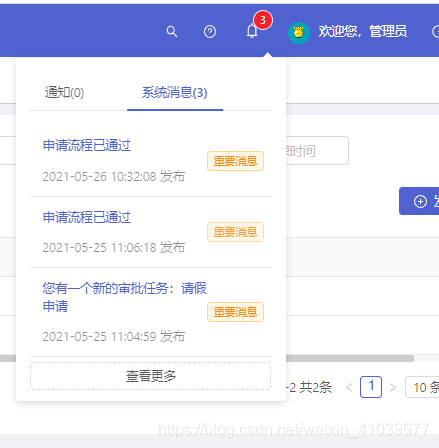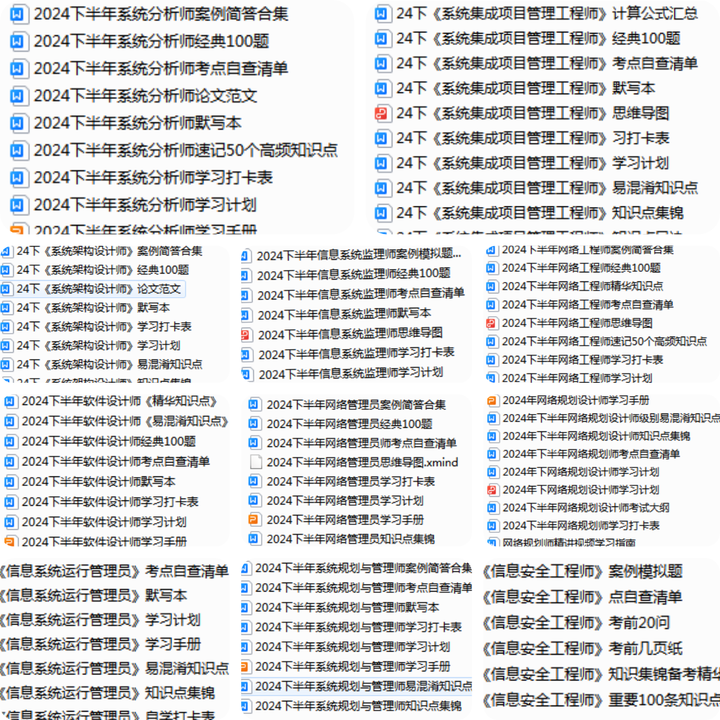llamaindex+Internlm2 RAG实践
- 基础作业:
- 配置基础环境
- 创建LLAMAINDEX文件夹存放课程相关文件
- 创建模型下载脚本download_hf.py
- 下载 Sentence Transformer 模型
- 下载 NLTK 相关资源
- LlamaIndex HuggingFaceLLM
- LlamaIndex RAG
- 新建脚本llamaindex_RAG.py
- LlamaIndex web部署
- 来问问模型一点专业的医学知识
基础作业:
- 任务要求:基于 LlamaIndex 构建自己的 RAG 知识库,寻找一个问题 A 在使用 LlamaIndex 之前InternLM2-Chat-1.8B模型不会回答,借助 LlamaIndex 后 InternLM2-Chat-1.8B 模型具备回答 A 的能力,截图保存。
配置基础环境
conda create -n llamaindex python=3.10
conda activate llamaindex
pip install llama-index==0.10.38 llama-index-llms-huggingface==0.2.0 "transformers[torch]==4.41.1" "huggingface_hub[inference]==0.23.1" huggingface_hub==0.23.1 sentence-transformers==2.7.0 sentencepiece==0.2.0
pip install einops==0.7.0 protobuf==5.26.1

创建LLAMAINDEX文件夹存放课程相关文件
mkdir LLAMAINDEX
cd LLAMAINDEX
mkdir model
创建模型下载脚本download_hf.py
touch download_hf.py
输入以下代码
import os
# 设置环境变量
os.environ['HF_ENDPOINT'] = 'https://hf-mirror.com'
# 下载模型
os.system('huggingface-cli download --resume-download sentence-transformers/paraphrase-multilingual-MiniLM-L12-v2 --local-dir /root/LLAMAINDEX/model/sentence-transformer')
下载 Sentence Transformer 模型
python download_hf.py

下载 NLTK 相关资源
cd /root
git clone https://gitee.com/yzy0612/nltk_data.git --branch gh-pages
cd nltk_data
mv packages/* ./
cd tokenizers
unzip punkt.zip
cd ../taggers
unzip averaged_perceptron_tagger.zip
这样使用时服务器即会自动使用已有资源,无需再次下载
LlamaIndex HuggingFaceLLM
cd ~/LLAMAINDEX/model
ln -s /root/share/new_models/Shanghai_AI_Laboratory/internlm2-chat-1_8b/ ./
cd ..
touch llamaindex_internlm.py
输入以下代码
from llama_index.llms.huggingface import HuggingFaceLLM
from llama_index.core.llms import ChatMessage
llm = HuggingFaceLLM(
model_name="/root/LLAMAINDEX/model/internlm2-chat-1_8b",
tokenizer_name="/root/LLAMAINDEX/model/internlm2-chat-1_8b",
model_kwargs={"trust_remote_code":True},
tokenizer_kwargs={"trust_remote_code":True}
)
rsp = llm.chat(messages=[ChatMessage(content="xtuner是什么?")])
print(rsp)
运行脚本,看模型输出效果
python llamaindex_internlm.py

模型居然认为xtuner是一个音乐播放器
LlamaIndex RAG
安装依赖
pip install llama-index-embeddings-huggingface==0.2.0 llama-index-embeddings-instructor==0.1.3

下载知识文档
mkdir data
cd data
git clone https://github.com/InternLM/xtuner.git
mv xtuner/README_zh-CN.md ./
新建脚本llamaindex_RAG.py
touch llamaindex_RAG.py
from llama_index.core import VectorStoreIndex, SimpleDirectoryReader, Settings
from llama_index.embeddings.huggingface import HuggingFaceEmbedding
from llama_index.llms.huggingface import HuggingFaceLLM
#初始化一个HuggingFaceEmbedding对象,用于将文本转换为向量表示
embed_model = HuggingFaceEmbedding(
#指定了一个预训练的sentence-transformer模型的路径
model_name="/root/model/sentence-transformer"
)
#将创建的嵌入模型赋值给全局设置的embed_model属性,
#这样在后续的索引构建过程中就会使用这个模型。
Settings.embed_model = embed_model
llm = HuggingFaceLLM(
model_name="/root/model/internlm2-chat-1_8b",
tokenizer_name="/root/model/internlm2-chat-1_8b",
model_kwargs={"trust_remote_code":True},
tokenizer_kwargs={"trust_remote_code":True}
)
#设置全局的llm属性,这样在索引查询时会使用这个模型。
Settings.llm = llm
#从指定目录读取所有文档,并加载数据到内存中
documents = SimpleDirectoryReader("/root/llamaindex_demo/data").load_data()
#创建一个VectorStoreIndex,并使用之前加载的文档来构建索引。
# 此索引将文档转换为向量,并存储这些向量以便于快速检索。
index = VectorStoreIndex.from_documents(documents)
# 创建一个查询引擎,这个引擎可以接收查询并返回相关文档的响应。
query_engine = index.as_query_engine()
response = query_engine.query("xtuner是什么?")
print(response)
运行脚本,看看RAG技术后模型输出是否有认识xtuner
python llamaindex_RAG.py

模型给出了我们想要的答案
LlamaIndex web部署
安装依赖
pip install streamlit==1.36.0

创建app文件
touch app.py
输入以下代码
import streamlit as st
from llama_index.core import VectorStoreIndex, SimpleDirectoryReader, Settings
from llama_index.embeddings.huggingface import HuggingFaceEmbedding
from llama_index.llms.huggingface import HuggingFaceLLM
st.set_page_config(page_title="llama_index_demo", page_icon="🦜🔗")
st.title("llama_index_demo")
# 初始化模型
@st.cache_resource
def init_models():
embed_model = HuggingFaceEmbedding(
model_name="/root/LLAMAINDEX/model/sentence-transformer"
)
Settings.embed_model = embed_model
llm = HuggingFaceLLM(
model_name="/root/LLAMAINDEX/model/internlm2-chat-1_8b",
tokenizer_name="/root/LLAMAINDEX/model/internlm2-chat-1_8b",
model_kwargs={"trust_remote_code": True},
tokenizer_kwargs={"trust_remote_code": True}
)
Settings.llm = llm
documents = SimpleDirectoryReader("/root/llamaindex_demo/data").load_data()
index = VectorStoreIndex.from_documents(documents)
query_engine = index.as_query_engine()
return query_engine
# 检查是否需要初始化模型
if 'query_engine' not in st.session_state:
st.session_state['query_engine'] = init_models()
def greet2(question):
response = st.session_state['query_engine'].query(question)
return response
# Store LLM generated responses
if "messages" not in st.session_state.keys():
st.session_state.messages = [{"role": "assistant", "content": "你好,我是你的助手,有什么我可以帮助你的吗?"}]
# Display or clear chat messages
for message in st.session_state.messages:
with st.chat_message(message["role"]):
st.write(message["content"])
def clear_chat_history():
st.session_state.messages = [{"role": "assistant", "content": "你好,我是你的助手,有什么我可以帮助你的吗?"}]
st.sidebar.button('Clear Chat History', on_click=clear_chat_history)
# Function for generating LLaMA2 response
def generate_llama_index_response(prompt_input):
return greet2(prompt_input)
# User-provided prompt
if prompt := st.chat_input():
st.session_state.messages.append({"role": "user", "content": prompt})
with st.chat_message("user"):
st.write(prompt)
# Gegenerate_llama_index_response last message is not from assistant
if st.session_state.messages[-1]["role"] != "assistant":
with st.chat_message("assistant"):
with st.spinner("Thinking..."):
response = generate_llama_index_response(prompt)
placeholder = st.empty()
placeholder.markdown(response)
message = {"role": "assistant", "content": response}
st.session_state.messages.append(message)
部署模型app
streamlit run app.py
来问问模型一点专业的医学知识
打开浏览器,访问 http://localhost:7860

模型回答的很随意,看着像瞎编
现在从openxlab的数据集下载医学文档,放到 /root/LLAMAINDEX/data 目录下


再次部署模型,并访问

整了点医学知识后,回答就专业很多
ps:这个数据集是复制电子书的,所以上面会有一些乱码和符号,需要自己清理一下,否则模型也是回答不出来



















